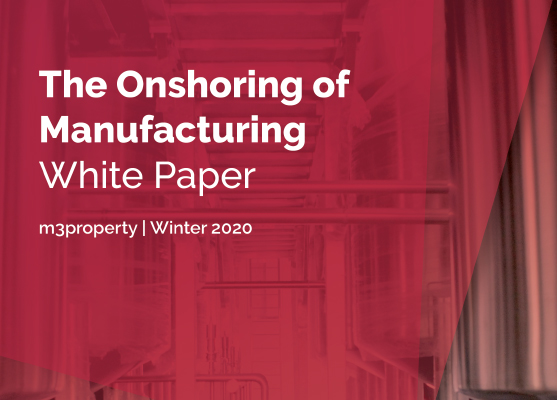The Onshoring of Manufacturing
David Chuter features in m3property’s ‘The Onshoring of Manufacturing’ white paper. In an interview, he explains why manufacturing is not just a large industry sector, but an “enabler across all sectors” in Australia.
In his view, there is now an opportunity in Australia to move from the manufacturing sector accounting for the current 6-7% of GDP to “get back to double digits”. With assistance like that offered by the IMCRC, and the research being completed, double-digit growth seems very possible.
What is the Innovative Manufacturing Cooperative Research Centre (IMCRC)?
CRCs have been around since the 1990s as initiatives from the Australian Government to join the dots between universities, companies, research organisations and Government as connection creates innovation and opportunities. IMCRC co-funds dollar for dollar cash grants for firms with projects across broad, multi-disciplinary industry-led research projects that deliver commercial outcomes and advance the cause of manufacturing transformation through education and advocacy. IMCRC has a portfolio of $200 million invested in smart manufacturing companies.
What is Industry 4.0? Is it the future of manufacturing and is it being applied in Australia?
Industry 4.0 is a range of technologies, hardware and software heralding the fourth Industrial Revolution. It is a German term and is based on developing new technologies including the Cloud, 3D printing, smart robotics, the Internet of Things, AI, social, mobile, computer power, data, machine learning etc. Recent examples include an Australian firm using 3D printing to create face masks during COVID-19. High-tech manufacturing is advancing in the Space and Medical industries in Australia. Digital manufacturing, augmented reality and virtual reality are all happening domestically, but the cost of investment in new equipment is resulting in many companies waiting for others to advance further in this space before they are willing to jump in.
Are we moving quickly enough in Australia?
We are definitely not moving quickly enough. COVID-19 is, however, accelerating the process and upscaling it as the focus on local manufacturing is going to assist the take-up of Industry 4.0. We are already seeing an upswing in connected 3D printing. Our challenge is that 90% of manufacturers employ less than 20 staff, so it is a fragmented industry and difficult to get take-up. We need greater distribution of information and understanding of the benefits.
COVID-19 has presented short-term opportunities for domestic manufacturers. Do you see long-term potential in a post-COVID-19 environment?
Yes, COVID-19 has provided short-term opportunities domestically, however, we need long-term plans, not short-term fixes. There is also a risk of increased protectionism. We need to look at where the raw materials are coming from and make products from our raw materials and the direction we take needs to make good business sense. We need to make sure that our end game is to create products that we can export to the world and we shouldn’t try to make everything in Australia.
Will increased innovative manufacturing result in greater take up of industrial space?
Yes and no. In terms of industrial space, the shift to modular construction is likely to result in greater demand for factory space, but 3D printing of orthopedic implants can be printed in hospitals and is, therefore, localising the manufacturing so going the other way. Supply chain shifts will result in some increasing demand for real estate; some will not. Smart buildings are going to be very important, but the spillover benefits will depend on who goes in and from where they source the products.

